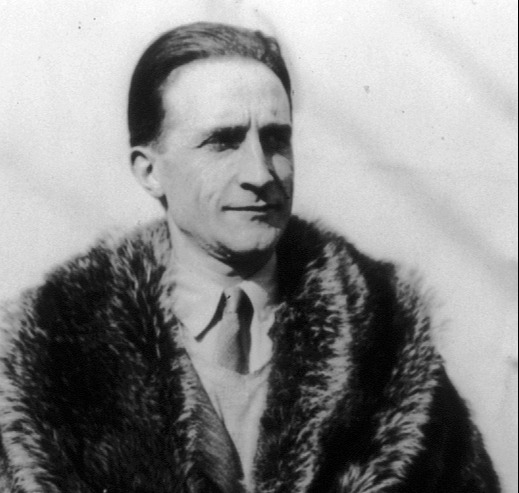
Marcel Duchamp
Marcel Duchamp was a French artist whose influence on the trajectory of art history is unmatched. By challenging the very essence of art, his pioneering readymades left an enduring mark on the art world, a resonance that endures to this day. Duchamp's firm belief in the primacy of ideas as the driving factor in art has rightfully earned him the title of the father of Conceptual art.
Biography of Marcel Duchamp
Raised in Normandy, Marcel Duchamp hailed from an artistic family. His father was the mayor of Blainville, and his mother cared for their seven children while also creating landscapes of the French countryside through painting. The family engaged in activities such as chess, reading, painting, and music. Among Duchamp's earliest artistic pursuits was "Landscape at Blainville" (1902), which he completed at the age of fifteen, reflecting his family's appreciation for Claude Monet.
His close relationship with his two elder brothers brought him to Paris in 1904, where he joined them in studying painting at Académie Julian after they had already pursued artistic careers. His brother Jacques Villon offered him support during his studies, and Duchamp worked as a cartoonist to earn some income. His early sketches showcased his ongoing interest in visual and verbal puns.
At the age of twenty-five, Duchamp had an encounter with Francis Picabia in 1911. The following year, he attended a theatrical production of "Impressions d'Afrique" by Raymond Roussel. Duchamp was greatly impressed by Roussel's inventive plots and puns, and this experience profoundly impacted him. As a result, this fascination with blending different genres would later shape his diverse artistic approach.
In 1915, the artist moved to New York, where he conceived and produced several readymades. By affixing his signature, Duchamp asserted ownership of found objects like a snow shovel, urinal, or bicycle wheel. These items, symbolically linked to themes of desire, eroticism, and childhood memories, aimed to reveal the absurdity of canonizing avant-garde artistic practices. Additionally, he dedicated seven years (from 1915 to 1923) to conceptualizing and creating one of his two significant pieces, "The Bride Stripped Bare by Her Bachelors, Even or The Large Glass." The installation, consisting of machinery interposed between glass panels, served as Duchamp's first "aesthetic manifesto," signifying his rejection of outmoded painterly obsessions with pleasing the visual senses, which he labeled the "Retinal Shudder."
As Surrealism gained prominence in France, Duchamp traveled between New York and Paris, participating in printed textual projects, sculptural installations, and collaborations spanning various mediums with the Surrealists. However, he consistently avoided groups due to the group politics that inevitably came with them.
Around 1920, Duchamp developed Rrose Sélavy, his feminine alter ego, to fully explore notions of sexual identity. This pseudonym played with the French phrase "Eros, c’est la vie" ("Love/Sex, it is life"). Additionally, he persisted in producing his readymades and displayed his renowned Bottle Rack series - a collection of eight bottle racks signed by Duchamp - in 1936. As time passed, Duchamp withdrew himself from the larger art world but stayed in touch with a small group of artists, including Man Ray, who took many photographs of Duchamp throughout his lifetime. For more than twenty years, Duchamp worked secretly on his second masterpiece, "Etant Donnes," a complex and sexualized diorama.
The artist evaded public attention, opting instead for chess, which he studied until his passing. He created the poster for the Third French Chess Championship in 1925 and, participating as a contender, concluded with a fifty percent score (3–3, including two draws), attaining the designation of chess master. Duchamp persisted in competing in the French Championships and additionally participated in the Chess Olympiads spanning 1928 to 1933, displaying a preference for hypermodern openings like the Nimzo-Indian.
Duchamp passed away unexpectedly and peacefully in the early hours of October 2, 1968, at his residence in Neuilly-sur-Seine, France.
Marcel Duchamp's Art Style
Duchamp studied Fauvism, Cubism, and Impressionism, finding fascination in innovative approaches to color and structure. He resonated with the Cubist concept of rearranging reality rather than its mere representation. Early works like "Nude Descending A Staircase" (1912) reflect his interest in machinery and its correlation to bodily movement through space, inherent in early Modernism. However, Duchamp was heavily attracted by avant-garde concepts of the artist as an anti-academic, and he identified with this aspect through his admiration for one of his early idols, the Symbolist painter and graphic artist Odilon Redon.
During his artistic inception, the artist developed an inclination for the enigmatic attraction of Symbolist themes, such as the woman as an elusive femme fatale. This deeply ingrained interest in themes of sexual identity would ultimately guide him toward Dadaism and Surrealism.
Coined by Duchamp, the term "readymade" was applied to mass-produced everyday items removed from their usual context and elevated to artworks by the mere choice of the artist. A performative act and stylistic category, the readymade had extensive implications for defining objects of art.
The artist dismissed purely visual or "retinal pleasure" as superficial, favoring intellectual, concept-driven approaches to art creation and observation. Yet, he maintained his dedication to studying perspective and optics, forming the basis for his experiments with kinetic devices. These pursuits reflected an ongoing fascination with portraying motion and machines, shared by contemporaneous Futurist and Surrealist artists.
Years:
Born in 1887
Country:
France, Blainville-Crevon